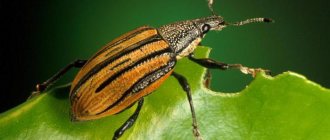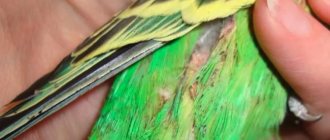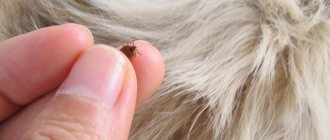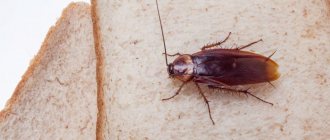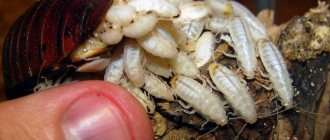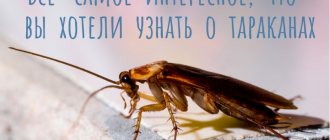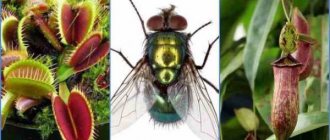Fear of insects is a fairly common occurrence, since fear is usually caused by something to which we have a strong dislike. Most people have an aversion to insects. For some, it is so pronounced that it develops into a mental disorder. In the scientific literature, panic fear of insects is called insectophobia, or entomophobia. Experts consider this type of zoophobia to be an irrational pathology. That is, it is difficult to explain logically. However, sometimes the reasons are justified. For example, a strong bite from an insect.
Types of fear of insects
Some psychiatrists believe that we inherited insectophobia from our ancestors, because since ancient times, arthropods have become a source of danger. This type of mental disorder can plague both children and adults. In this case, the fear is not associated with the object itself, but with the monster that their imagination draws when they see it.
A person with insectophobia may experience panic attacks when confronted with insects (even when seeing images of them), but rarely because of all of them at once. Insect phobia is divided into specific types:
- acaraphobia, or fear of ticks;
- apiophobia, or fear of bees;
- arachnophobia, or fear of spiders;
- dipterophobia, or fear of flies;
- isopterophobia, or fear of termites and other insects that feed on tree bark;
- cnidophobia, or fear of stinging insects;
- myrmecophobia, or fear of ants;
- Scoleciphobia, or fear of worms and maggots.
There is also a mosquito phobia, which has not yet been given a scientific name. A person is terrified of diseases that they can carry, or ordinary mosquito bites. The list of “scary” objects, in addition to biting and dangerous ones, includes even harmless and cute insects. For example, butterflies.
Risk factors
There are several factors that may put you at risk of developing a phobia:
- If you notice that anyone close to you, such as father, mother, brother, etc., suffers from insectophobia, you risk developing this fear in yourself as well.
- If you have experienced a traumatic incident in the past, you may develop fear of the source.
- Specific phobias develop even at the age of 10, so you become unable to interact with people.
Where does the fear of insects come from?
This question has not yet been given a clear answer. However, there are two main theories to explain this phenomenon:
Freud's psychodynamic theory
This theory greatly influenced science, but has already lost its popularity. Freud explained this by a connection with a mechanism that pushes stimuli into the subconscious that protect a person when danger arises. Man sought to keep nature under control and drowned out these signals of hidden alarm. This caused distortions in his mental defense mechanism. Anxiety moved to the unconscious level, giving rise to fear of ordinary objects subject to human control. They could be arthropods. Fear is in the subconscious. This is why man cannot govern. According to Freud, only a specialist can help with this.
Behavioral theory
This theory is supported by most scientists. Her followers say that insect phobia is formed at a time when a person feels fear, in two ways: conditioned and modeled.
Conditional path
According to experts, the cause of fear of insects is usually mental trauma from childhood. An impressionable child who is just beginning to explore the world can see a terrible monster in any small bug. A mosquito bite or buzzing noise can cause severe discomfort. The insect may appear unexpectedly and frighten him or be in a place where a frightening situation has occurred. And despite the fact that it has nothing to do with this event, the child develops bad associations.
If this fear sits deep inside a person’s consciousness, then it is very difficult to overcome it. You should seek the help of a psychologist.
Sometimes fear of insects also appears in an adult if he becomes a victim of an attack, for example, by bees.
Simulated path
This variant of the formation of fear of insects is associated with its acquisition from the outside. The child copies the behavior of his parents and other close people by observing them. If one of the family members has a similar disorder and somehow shows it, then the baby will begin to think that he should be afraid too.
Insectophobia can also be caused by parents prohibiting them from picking up insects. The child will begin to perceive them as something bad and scary. Therefore, you should not make this mistake.
Another source of fear of insects is scary stories and films where they are presented as villains, attacking people or simply looking scary.
To avoid such situations, parents are advised to monitor their behavior and the media products that are offered to their children. And if fear has nevertheless formed, you should not delay going to a specialist.
Fear of infection
In many cases of entomophobia, the patient is afraid of becoming infested with insects. Many insects, such as cockroaches and flies, carry diseases. However, people with infection phobias take reasonable caution and precision to extremes. In addition, there is disgust, a reaction that often causes symptoms of anxiety. A variety of studies conducted in the 2000s have shown that we react more strongly to creatures we find disgusting than to animals that may be more dangerous in nature. This may be an evolutionary response to our ancestors' misunderstanding of disease prevention.
Symptoms of insectophobia
Symptoms that indicate a fear of insects include:
- panic attacks when confronted with an insect;
- nausea;
- muscle tension;
- increased heart rate;
- dilated pupils;
- paleness/redness;
- desire to escape from an insect;
- a sharp increase in sweating;
- psychomotor agitation;
- inappropriate behavior: a person tries in every possible way to protect himself from insects using various means and protective clothing, is afraid of the sounds they make, clogs all the windows and does not want to go outside at all. It becomes an obsession. It happens that people even try to burn objects of fear, risking harm to themselves.
Complications
A phobia that bothers someone and causes serious problems in their life may not seem like a concern to others. A patient suffering from insectophobia may have many complications, such as:
- Avoiding any social interaction because of the thought that people might laugh at him. This behavior can lead to reclusiveness and loneliness.
- The complication of insectophobia leads to clinical depression or develops anxiety disorders.
- Substance abuse to cope with stress caused by fear.
How to get rid of the fear of insects yourself?
Recommendations for getting rid of insectophobia for adults:
- Find out what caused your fear and study it.
- Find out more information about the insects that cause you fear. If they do not live in your area or do not harm people at all, you will understand that there is no reason to panic.
- Get outside more often, walk in parks, visit exhibitions and greenhouses.
- When faced with “that” insect, try to remain calm and do not run away. Try to understand and convince yourself that it is not dangerous.
- When you are ready, try to touch the insect. For example, plant a beautiful butterfly on your hand.
Recommendations for getting rid of insectophobia for children
Children still have insufficient knowledge about the world around them. Uncertainty can make them feel afraid. To prevent this, use the following recommendations:
- Describe the insect to your child so that he understands that it is not a threat.
- Show him pictures of insects so that he gets used to them before he meets them in life.
- Tell him stories in which insects do good deeds. Then the child will have a good impression of them.
If the above methods do not help and the situation worsens, you need to contact a specialist. For example, to the psychologist-hypnologist Nikita Valerievich Baturin. You can write to him personally or find special exercises on his channel, for example, audio trance:
Far-fetched reasons
- Fear from the thought that an insect could get into the mouth, nose, stomach, even the brain.
- The influence of the media (stories, films, computer games, etc.), which describe huge, terrible insects that are aggressive towards people.
- Fear of infection (being bitten). Most insectophobes are afraid of getting infected from insects. No one denies the fact that insects can carry infections, but in relation to these people, fear goes beyond all limits of reason.
- Increased impressionability and wild imagination . Sometimes people are disgusted by the mere appearance of an insect. And if we add to this a person’s lack of reliable knowledge about these creatures, then as a result an inexplicable fear may develop, turning into a phobia.
How is fear of insects treated using psychotherapy?
A cure for insectophobia is quite possible. Despite the specificity of this disorder, it has a completely understandable clinical picture. Therapy is considered the most effective method. The client encounters an object that provokes his phobia.
The following methods are distinguished:
- human simulation;
- flood;
- systematic desensitization.
During the simulation of the situation, the psychologist actively interacts with the subject of fear in order to demonstrate the exaggeration of this phobia and the harmlessness of arthropods. The client needs to mentally join the specialist and his victory in order to recognize the artificiality of insectophobia.
In a flood, the client is exposed to a fear trigger a number of times—therapists describe the source in an exaggerated manner. The person experiences a surge of emotions, and at the end of the procedure, the specialist illustrates the frivolity of the fear of insects due to the absence of real harm to the planet by its arthropod inhabitants. In this way, he influences the client’s subconscious, convincing him of the groundlessness of the phobia.
Systematic desensitization is the use of relaxation training to help the client relax. With the help of this, the specialist builds a hierarchy of his fears.
Treatment
Treatment of insectophobia takes place in two stages:
- Search for the cause: a traumatic situation in the subconscious, memory.
- Working on the situation, rethinking.
First, the psychotherapist finds the reason that provoked the phobia. The patient sees the situation differently. Once the cause is eliminated, the symptoms also go away. Over time, the person completely gets rid of the phobia.
Supportive therapy is also provided. This is the attachment of positive associations to insects of the species that frighten the patient. Psychologists show fear from the other side and explain the degree of real danger. The patient understands how exaggerated his fears were. There is no more panic. If necessary, the doctor will prescribe medication to eliminate anxiety and destructive manifestations of fear for the body.
Methods for correcting the condition
Additional therapy may include antidepressants, antipsychotics, and sedatives. They eliminate somatic symptoms, as well as possible complications during panic attacks.
In extremely severe cases, hypnotherapy may be required. Sometimes specialists from other medical fields come to the aid of a psychotherapist when the trigger for fear is physiological trauma. In this case, it becomes clear which specialist deals with this disease. It is possible to develop allergic reactions from bites of ants, bees and other insects. This can be complemented by psychological problems, so an integrated approach is required to heal from the pathology.
The objective ones include the following:
- Negative consequences after contact with insects (bites of bees, wasps, mosquitoes, etc.). A sharp feeling of pain and the allergic reaction that develops after this becomes a psychotraumatic situation that leads to the formation of a phobia.
- Parental behavior . A small child repeats after his parents their hysterical reaction to an insect, or he was frightened by scary stories about dangerous insects (remember “The Cockroach” by K. Chukovsky!).
- Medical problems . The presence of brain injuries, schizophrenia, syphilis, meningitis, cirrhosis, mental retardation, as well as alcoholism and drug addiction can give rise to this phobia in a person.
First aid for panic attacks
Very often, fear of insects is described as similar to a panic attack. Insectophobia is a complex of unpleasant sensations when seeing or touching insects. The client feels a premonition of something terrible, even imminent death. If this becomes a trend, professional help is needed.
You can help yourself during exacerbations yourself. You need to exercise regularly and spend more time with other people.
Another productive method is to change the focus of attention to an object that does not cause fear. Departing from the intended course of drug therapy prescribed by a specialist is strictly not recommended. Insectophobia is corrected, and group classes are actively used. These meetings are attended by those for whom insect phobia has become a serious problem that interferes with a full life.
If it becomes active at an unexpected moment, it is worth working on your breathing, making it even and calm. Breathing exercises will help with this. It will bring the body to balance and peace, relieving tension. You need to inhale as rarely and deeply as possible. You can use a paper bag: take it in your hand and inhale deeply, and after eight seconds slowly exhale into it. Repeat for about five to eight minutes. Usually this procedure allows you to ward off insectophobia for some time.
Definition
Representatives of arthropods are often unpleasant to people, causing an attack of disgust with their very appearance. In science, the fear of insects is called insectophobia; it could be caused by various reasons. You can distinguish ordinary fear, hostility from a phobia by the following signs:
- Experiencing fear and horror, a person tries to instinctively isolate himself from the object, which often saves his life. And insectophobia encourages its victim to act illogically.
- Seeing the object of his phobia - a cockroach, beetle, fly or other insect, a person experiences not just discomfort, but a serious deterioration in well-being. He experiences spasms in the throat, breathing becomes difficult, an insurmountable weakness is felt throughout the body, trembling in the limbs, and convulsions.
- Panic fear of insects can be accompanied by hysterics and a feeling of the unreality of what is happening.
Signs of a phobia, therefore, are somatic changes and a lack of logic in actions. Obsessive fear can occur in anyone. This does not depend on age, gender, or occupation.
View galleryIf the attack took you by surprise
Insectophobia often catches a person at the wrong time. You can see an insect on yourself or in close proximity everywhere: at work, at home, while walking, in nature. The first thing to do is go to a safe distance
This is a simple precaution to avoid being bitten by a bee, tick or spider. If an insect is in the house, it must be expelled or destroyed.
The bee can be driven out by opening the window. It's more difficult with a spider.
5 recommendations will help you cope with panic:
- If panic sets in, breathe deeply. Inhale for “one”, exhale for “two”.
- Call someone who can remove the insect from your home.
- Remember that there is no real danger.
- Remember that the cause of fear is your distorted attitude towards this species. The insect is not dangerous. They generally do not have the habit of attacking unnecessarily.
- Don't make a big deal about the episode. Immediately switch to other thoughts. We live in unity with nature, and spiders, bees and others are as much a part of it as humans.
Learn to control yourself, don't react too emotionally. Imagine the calmest, most balanced person from your environment. How would he react? Take his behavior pattern and copy it.
Formation of a positive image
How to stop being afraid of spiders and bugs? It will be a surprise for many people to learn that in fact these creatures do not have any negative feelings towards people, do not hunt them and do not deliberately enter public space. Perhaps, it is they who are in a vulnerable position - in our latitudes, poisonous individuals are extremely rare, the chance of meeting them uncontrollably tends to zero, but we can swat a defenseless creature with a slipper.
You can find a special subtle charm in the thinnest web, on which drops of dew tremble. On sale there are funny toys in the form of spiders, interesting figurines, and elegant jewelry. You can start with them, gradually getting rid of fears.

